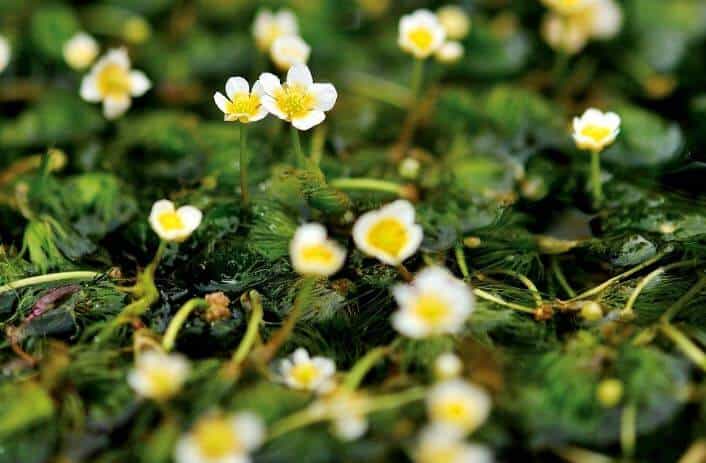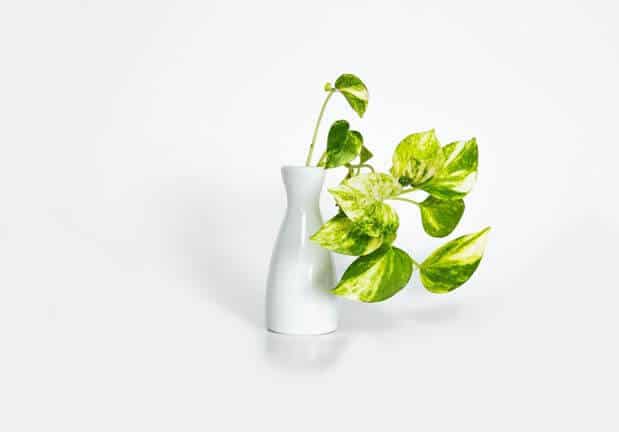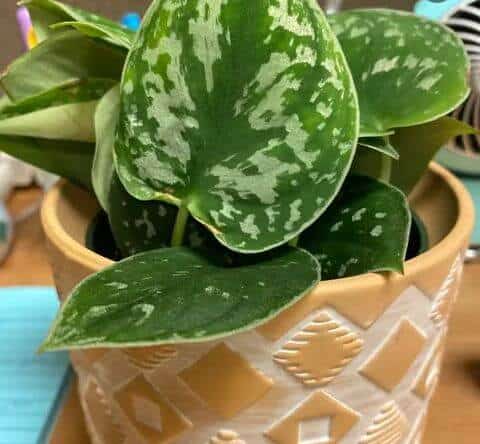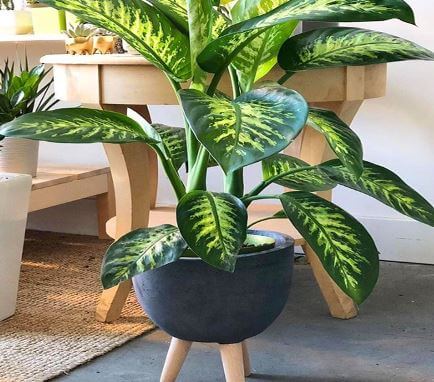Last Updated on January 6, 2023 by a Friendly Gardener
If you plan to add a large Mishima plant to your collection of indoor greenery, you should know how to take care of it.
The plant belongs to the Ranunculaceae family. It is native to east Asia and is known as the Mishima Baikamo in those parts.

It is a visually appealing water plant with small, white flowers. It fits quite well in the apartment or workplace interior and is low maintenance.
In this article, you will learn everything you need to know about the large Mishima plant care.
How to Take Care of a Large Mishima Plant

Though the plant is typically found growing along the river bank, it can be grown indoors. It is a fuss-free plant and quite resilient. Given the plant’s native habitat lies in Japan, it is important to create a similar environment indoors for the unique plant to help it thrive.
Here are some instructions on how to deal with large Mishima plant care indoors.
Sunlight
Though the plant can tolerate some amount of direct sunlight, it thrives in a low-light environment. Placing it under the harsh glare of the sun can cause the plant to wilt and burn.
Always make sure you are placing the pot in a bright spot where the light is being filtered. However, make sure it is not a drafty spot. The plant prefers warmth over cold.
Water
The plant likes water. In fact, its water requirements are more than any other plant. You have to regularly water the plant for healthy growth. Make sure the soil does not completely dry out. Keep the potting mix moist at all times.
However, take care not to create a waterlogging situation. If you overwater the plant, you will make it vulnerable to root rot.
The best way to prevent waterlogging is to layer the plant container with pebbles at the base before adding the soil mix.
Humidity
The plant must be placed in a location with appropriate humidity levels. Kitchens and bathrooms are humid environments. You can also easily increase humidity by using a water-filled tray with pebbles. Place the pot over the tray.
Alternatively, instead of isolating the plant, place other plants near it to create small pockets of humidity.
You can also use a misting device. Misting increases moisture around the plant. If you live in a particularly arid region, you may need to mist several times a day. If misting is too much work for you, a humidifier will also work wonders.
Fertilizer
The plant needs an adequate amount of fertilizer applications. Add fertilizer to the soil mix every month. The amount of fertilizer will depend on several factors. It thrives on organic matter.
Make sure to feed it fertilizer during warmer months. Once the cooler months roll by, reduce the amount of fertilizer application by up to thirty percent. Increase this level when the temperatures start to rise. This way, you will be feeding your plant all the necessary nutrients required for its growth.
Additional Care

The Mishima plant thrives in warm climates. However, you can grow it indoors throughout the year.
As long as you provide them with adequate water, organic matter, and humidity, they will grow well. They do well with indirect light. Before planting the large Mishima plant, choose a well-ventilated container.
It is also important to take into consideration the climate of the region. The plant is not hardy enough to tolerate the winter months of the US. In order to survive, the plant needs warmth and plenty of water. So, make sure you are protecting it from the harsh elements and properly taking care of its requirements.
Clusters of white flowers bloom on the plant in late fall. If all the requirements of the plant are being met properly, the plant may rapidly grow large. Prune the plant periodically to keep it structured and stop it from dwarfing your other plants.
Make sure the plant is getting good air circulation. Keep it away from direct sunlight and heat sources. You will also need to ensure its potting mix is slightly acidic in nature.
What Are the Benefits of Keeping a Mishima Plant?

Indoor plants, with their beautiful foliage and lush flowers, tend to add beauty and comfort to interior spaces. Most indoor plants are quite easy to take care of, such as the large Mishima plant.
Besides livening up your living space, these plants also potentially offer certain health benefits.
Multiple studies have indicated that indoor plants offer both physical and psychological health benefits. They have been known to improve mood, lower anxiety, and stress, reduce fatigue, improve productivity, improve air quality, and enhance healing.
Research has shown that many houseplants can absorb harmful pollutants present in indoor air. Additionally, they can reduce the instances of indoor dust, making them efficient air cleaners.
It has been suggested that occupying at least two percent of a room with plants is enough to have a positive impact on health and happiness.
Just as connecting with nature creates a positive psychological impact, caring for nature can also have a similar impact. The simple act of watering your plants can help lower stress and anxiety.
The Bottom Line
The large Mishima plant is easy to care for by novice plant owners. The plant has beautiful foliage that can liven up any space in your house or office.
The plant needs to be kept moist at all times. It has higher water needs than other indoor plants. Besides needing adequate water, it also thrives in low-light environments. While it can tolerate some direct light, it is better to keep it in a low-light, humid location for the majority of the day.
It is also a voracious eater, requiring frequent fertilizer applications. Though Mishima adapts well to temperature, it prefers warmth, especially during winter months in the US.
Now that we have covered the basic needs of a large Mishima plant, are you ready to take care of your new plant?


